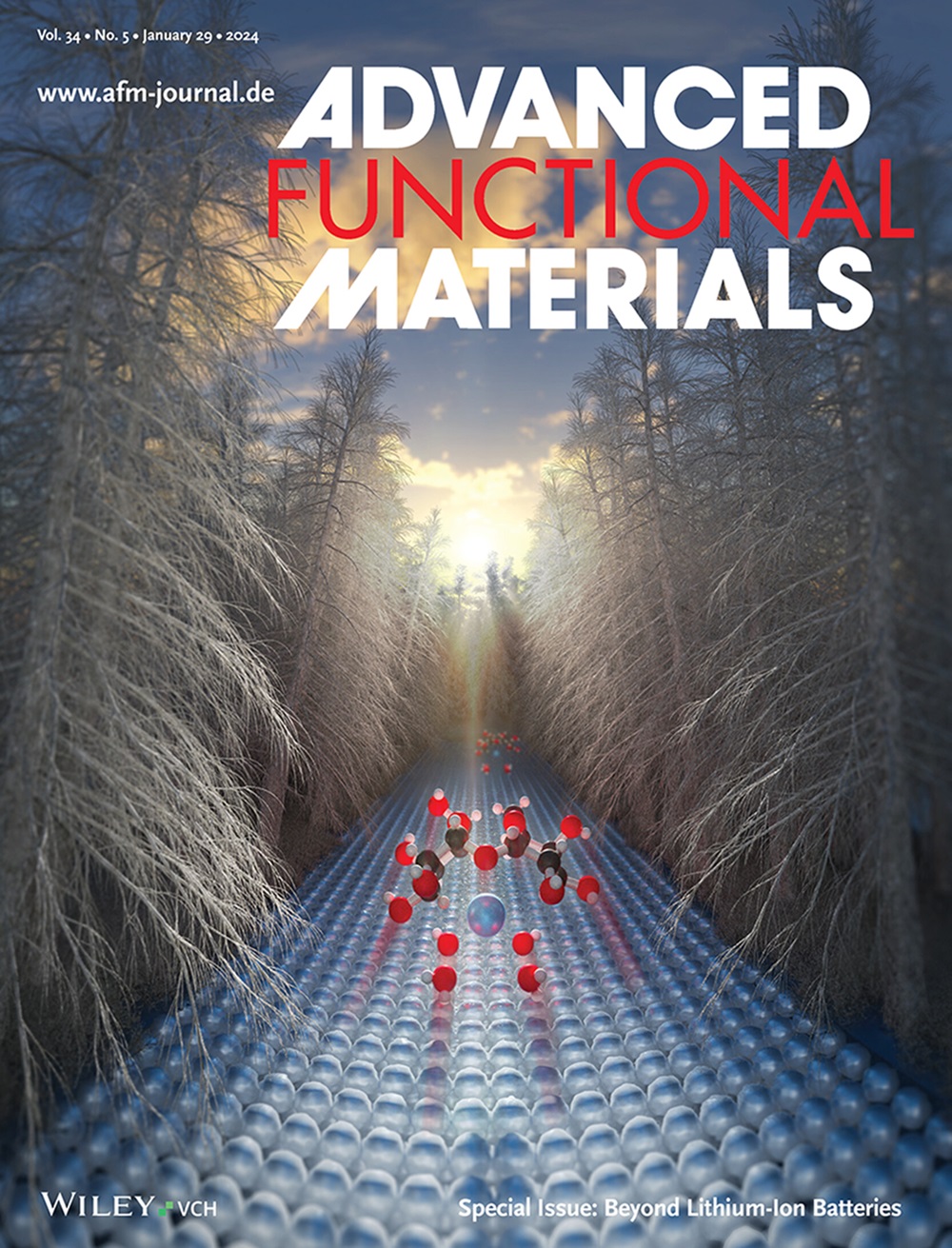调节FeCu合金气凝胶纳米酶的d波段中心促进生物传感和伤口治疗
IF 18.5
1区 材料科学
Q1 CHEMISTRY, MULTIDISCIPLINARY
引用次数: 0
摘要
过渡金属特别是铁基催化剂是一种新兴的酶模拟材料,在生物传感和治疗领域引起了极大的兴趣。然而,对H2O2的亲和力差限制了它们的催化活性,而高精度和可控的工程纳米酶调控仍然是一个挑战。本文提出了一种简单的方法,通过第二金属中心和表面配体工程,制备具有自支撑、分层多孔网络结构的FeCu/hemin气凝胶纳米酶,实现H2O2 -亲和序列扩增。令人兴奋的是,FeCu/hemin纳米酶对H2O2的亲和力比Fe粒子提高了14.03倍,催化效率(Kcat/Km)比FeCu提高了5.88倍。机制研究表明,金属Cu和hemin修饰使Fe的d波段中心从−0.49 eV上升到−0.17 eV,促进了电子转移过程,从而促进了H2O2的解离。重要的是,FeCu/hemin纳米酶可以高度灵敏地检测诺氟沙星,检测限低至72 nm。值得注意的是,它在体外和体内都显示出显著的抑制细菌生长的活性,没有明显的副作用。因此,这项工作不仅为合理设计具有高活性和稳定性的纳米酶提供了思路,而且为提高酶模拟活性的d波段中心调谐提供了新的前景。本文章由计算机程序翻译,如有差异,请以英文原文为准。
Tuning d‐Band Center of FeCu Alloy Aerogel Nanozyme Boosting Biosensing and Wound Therapy
Transition metals especially Fe‐based catalysts representing an emerging type of enzyme‐mimicking materials are of great interest in biosensing and therapy fields. However, the poor affinity toward H2 O2 limits their catalytic activity while high‐precise and controllable regulation of engineering nanozymes remains a challenge. Herein, a facile approach is presented to fabricate FeCu/hemin aerogel nanozymes with self‐supported, hierarchically porous network structures through second metal center and surface ligand engineering, achieving sequential H2 O2 ‐affinity amplification. Excitingly, the affinity of FeCu/hemin nanozymes for H2 O2 exhibits a 14.03‐fold enhancement than that of Fe particle, accompanied with 5.88‐fold catalytic efficiency (K cat /K m ) increase than FeCu. Mechanism studies suggest that the metal Cu and hemin modifications upshift the d ‐band center of Fe from −0.49 to −0.17 eV and promote electron transfer process, thus facilitating the dissociation of H2 O2 . Importantly, FeCu/hemin nanozymes allow highly sensitive detection of norfloxacin with a low detection limit of 72 nm . Notably, it shows a remarkable inhibition activity on bacterial growth in vitro and in vivo with no apparent side effects. Therefore, this work not only sheds light on the rational design of nanozymes with highly active and stable properties, but also offers new prospects for the d ‐band center tuning to boost enzyme‐mimic activity.
求助全文
通过发布文献求助,成功后即可免费获取论文全文。
去求助
来源期刊

Advanced Functional Materials
工程技术-材料科学:综合
CiteScore
29.50
自引率
4.20%
发文量
2086
审稿时长
2.1 months
期刊介绍:
Firmly established as a top-tier materials science journal, Advanced Functional Materials reports breakthrough research in all aspects of materials science, including nanotechnology, chemistry, physics, and biology every week.
Advanced Functional Materials is known for its rapid and fair peer review, quality content, and high impact, making it the first choice of the international materials science community.
 求助内容:
求助内容: 应助结果提醒方式:
应助结果提醒方式:


